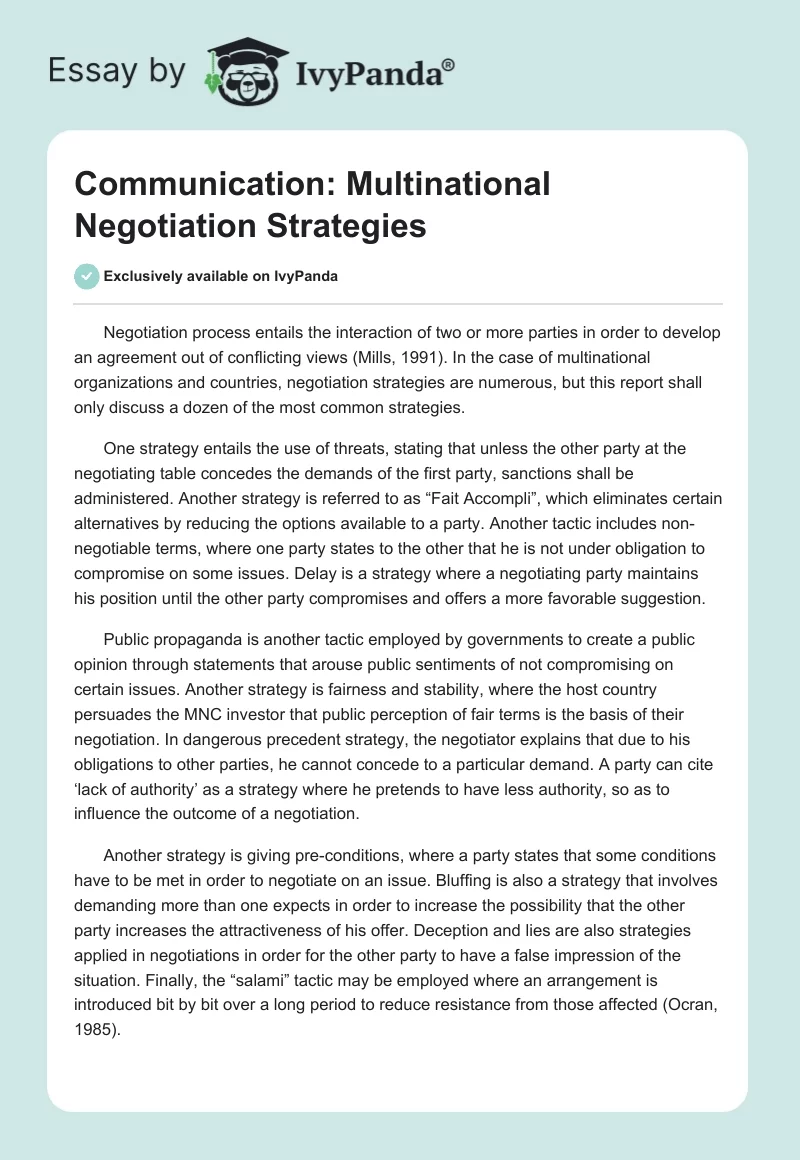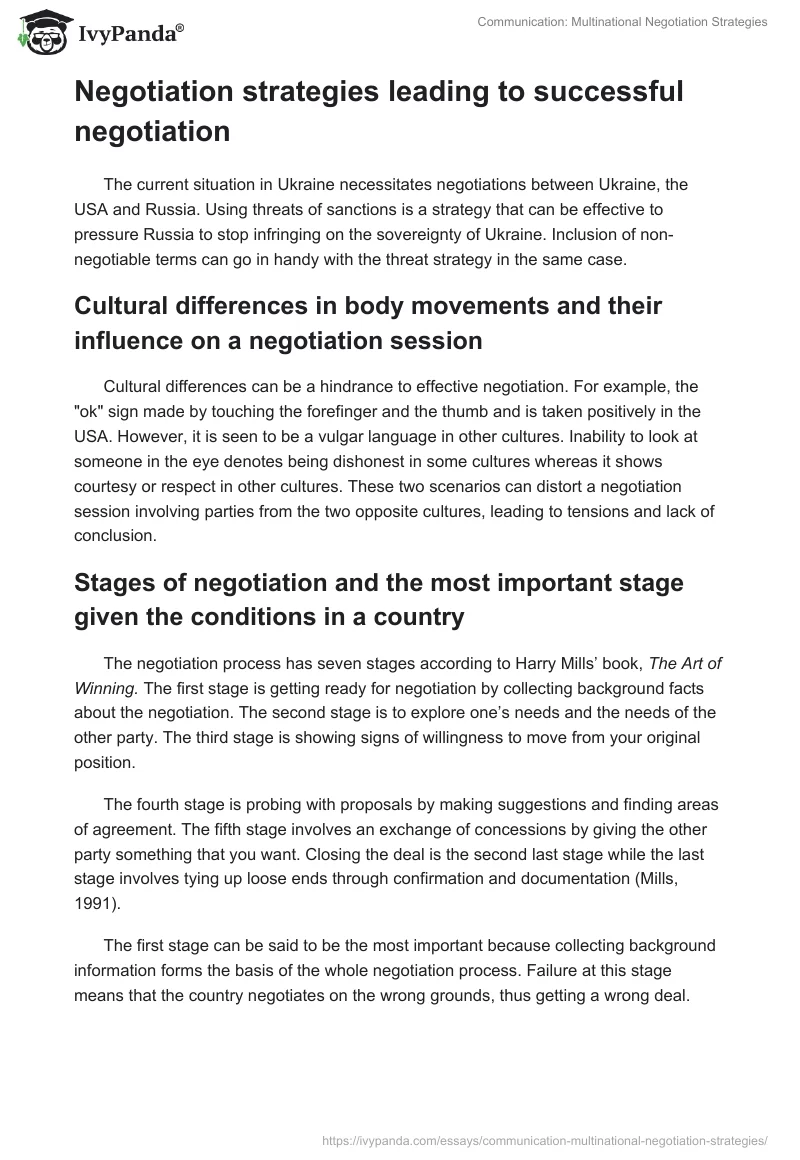Negotiation process entails the interaction of two or more parties in order to develop an agreement out of conflicting views (Mills, 1991). In the case of multinational organizations and countries, negotiation strategies are numerous, but this report shall only discuss a dozen of the most common strategies.
One strategy entails the use of threats, stating that unless the other party at the negotiating table concedes the demands of the first party, sanctions shall be administered. Another strategy is referred to as “Fait Accompli”, which eliminates certain alternatives by reducing the options available to a party. Another tactic includes non-negotiable terms, where one party states to the other that he is not under obligation to compromise on some issues. Delay is a strategy where a negotiating party maintains his position until the other party compromises and offers a more favorable suggestion.
Public propaganda is another tactic employed by governments to create a public opinion through statements that arouse public sentiments of not compromising on certain issues. Another strategy is fairness and stability, where the host country persuades the MNC investor that public perception of fair terms is the basis of their negotiation. In dangerous precedent strategy, the negotiator explains that due to his obligations to other parties, he cannot concede to a particular demand. A party can cite ‘lack of authority’ as a strategy where he pretends to have less authority, so as to influence the outcome of a negotiation.
Another strategy is giving pre-conditions, where a party states that some conditions have to be met in order to negotiate on an issue. Bluffing is also a strategy that involves demanding more than one expects in order to increase the possibility that the other party increases the attractiveness of his offer. Deception and lies are also strategies applied in negotiations in order for the other party to have a false impression of the situation. Finally, the “salami” tactic may be employed where an arrangement is introduced bit by bit over a long period to reduce resistance from those affected (Ocran, 1985).
Negotiation strategies leading to successful negotiation
The current situation in Ukraine necessitates negotiations between Ukraine, the USA and Russia. Using threats of sanctions is a strategy that can be effective to pressure Russia to stop infringing on the sovereignty of Ukraine. Inclusion of non-negotiable terms can go in handy with the threat strategy in the same case.
Cultural differences in body movements and their influence on a negotiation session
Cultural differences can be a hindrance to effective negotiation. For example, the “ok” sign made by touching the forefinger and the thumb and is taken positively in the USA. However, it is seen to be a vulgar language in other cultures. Inability to look at someone in the eye denotes being dishonest in some cultures whereas it shows courtesy or respect in other cultures. These two scenarios can distort a negotiation session involving parties from the two opposite cultures, leading to tensions and lack of conclusion.
Stages of negotiation and the most important stage given the conditions in a country
The negotiation process has seven stages according to Harry Mills’ book, The Art of Winning. The first stage is getting ready for negotiation by collecting background facts about the negotiation. The second stage is to explore one’s needs and the needs of the other party. The third stage is showing signs of willingness to move from your original position.
The fourth stage is probing with proposals by making suggestions and finding areas of agreement. The fifth stage involves an exchange of concessions by giving the other party something that you want. Closing the deal is the second last stage while the last stage involves tying up loose ends through confirmation and documentation (Mills, 1991).
The first stage can be said to be the most important because collecting background information forms the basis of the whole negotiation process. Failure at this stage means that the country negotiates on the wrong grounds, thus getting a wrong deal.
References
Mills, H. A. (1991). Negotiate : The Art of Winning. Aldershot: Gower.
Ocran, T. (1985). The Process and Outcome of Negotiations with Multinatioal Corporations: A Conceptual Framework for Analysis. Akron Law Review, 18(3), pp. 405-434.


